For visitors coming to Dien Bien for the first time and wanting to explore most of the highlights, the 4-day, 3-night (or 3-day, 2-night) itinerary is a suitable and popular choice.
Overview of Dien Bien Tourism
Dien Bien is a mountainous province in the Northwest, about 450km from Hanoi , bordering Son La, Lai Chau, and bordering China and Laos; including 10 administrative units: Dien Bien Phu city (provincial capital), Muong Lay town and 8 districts.
Dien Bien has a tropical monsoon climate in the highlands, influenced by the dry and hot southwest monsoon (often called the Lao wind). Dien Bien has rich potential for cultural-historical tourism, ecological tourism, and community tourism.
 |
The beauty of Dien Bien's Ban flowers in the afternoon sun. Ban flowers grow naturally in almost all mountainous areas in Dien Bien, and are also planted to beautify the urban landscape. |
The time often chosen by tourists to come to Dien Bien is spring and early summer, when the weather is pleasant, no rain, many flowers bloom to decorate the landscape (peach blossoms, cherry blossoms, ban flowers, royal poinciana flowers, purple-flowered flowers, etc.), rich in traditional festivals and activities to celebrate the Dien Bien Phu Victory (May 7).
Move
By road: From Hanoi and some northern provinces, there are buses running to Dien Bien. To save time, visitors from Hanoi should choose night buses, departing from My Dinh, Giap Bat, Yen Nghia bus stations, ticket prices from 300-500 thousand VND/way; travel time is about 10 hours.
Tourists using personal vehicles can easily follow the directions of online map applications, along National Highway 6, National Highway 32, National Highway 37...
 |
Tourists traveling by road will pass through Pha Din Pass, an important historical site and also a spectacular route in the middle of nature. (Photo: Department of Culture, Sports and Tourism of Dien Bien) |
Air: Dien Bien has Dien Bien Airport (formerly Muong Thanh Airport, located in Dien Bien Phu city). Currently, only Vietnam Airlines operates the Hanoi-Dien Bien Phu route (flight time 55 minutes).
Accommodation
In Dien Bien Phu city, there are many 3-4 star hotels with large capacity, such as: Muong Thanh Hotel, A1, Nam Rom, Phuong Nam, An Loc, Provincial Party Committee Guest House, Trade Union Hotel, Him Lam Resort Eco-tourism Area... Besides, there are motels interspersed in residential areas, near tourist attractions, with prices ranging from 200-350 thousand VND/night.
 |
Che Can cultural village, a prominent community tourism destination in Dien Bien. |
Tourists who want to experience community tourism can refer to booking accommodation and food services at homestays in cultural-community tourism villages such as Men village, Che Can village, Phieng Loi village, Him Lam village, Na Tau village (Dien Bien Phu city), Ten village (Dien Bien district), Na Su village (Nam Po district)...
Each stilt house is often renovated and decorated... with a capacity of 12-30 guests, accommodation prices range from 70-90 thousand VND/person.
Typical destinations (suggested 4 days 3 nights itinerary)
Day 1: Historical relic cluster in the heart of Dien Bien Phu city, convenient to visit in 1 day because most of them are located close to each other.
Hill A1 and National Martyrs Cemetery A1
Hill A1 in Muong Thanh ward, the center of Dien Bien Phu city, used to be the most important stronghold in the Dien Bien Phu campaign. There are still traces of explosive craters created by 960kg of explosives, bunkers, trenches, barbed wire fences...
Next to Hill A1 is the A1 National Martyrs Cemetery, which is solemnly and majestically designed, has a large, clean campus and lots of trees. Dien Bien people and tourists often visit to burn incense and pay tribute to the heroic martyrs.
 |
Tour guide explains about the crater on Hill A1. |
Dien Bien Phu Victory Museum
Also in Muong Thanh ward, the museum preserves and displays nearly 1,000 documents, images, and artifacts about the Dien Bien Phu campaign as well as the significance of the Dien Bien Phu victory in the resistance war against French colonialism. The museum is beautifully designed with the shape of a soldier's hat.
The highlight here is the panoramic mural “The Battle of Dien Bien Phu”, one of the world’s largest war-themed paintings, meticulously and impressively created by nearly 100 Vietnamese painters and sculptors over 2 years.
 |
Unique mural with rich historical and aesthetic value. |
De Castries Tunnel
About 1km from Hill A1, the command bunker of French military commander General De Castries was once called "impregnable", with a system of solid trenches, dense barbed wire and 4 tanks.
On May 7, 1954, De Castries and his soldiers bowed their heads and surrendered to the Vietnamese army, marking the complete defeat of the Dien Bien Phu stronghold, putting an end to the colonial regime throughout Indochina.
 |
Tourists check-in at De Castries Tunnel. |
Dien Bien Phu Victory Monument
Located on the top of D1 hill, the bronze statue cluster was inaugurated on the occasion of the 50th Anniversary of Dien Bien Phu Victory (May 7, 2004). From here, there is a panoramic view of the central area of Dien Bien Phu city and a corner of Muong Thanh field.
 |
Dien Bien Phu Victory Monument is a destination not to be missed when coming to Dien Bien. |
Day 2: Continuing the journey in the footsteps of the great victory
Dien Bien Phu Campaign Command
Located under the canopy of the old forest in Muong Phang commune, Dien Bien district, about 30km east of Dien Bien Phu city, it includes a system of camps, tunnels... where General Vo Nguyen Giap and officers and soldiers of the Dien Bien Phu campaign command stationed troops, held combat meetings, and made decisions that led to the victory of the campaign.
From the observation deck at the highest point (about 1,000m above sea level), visitors can see the Muong Thanh basin with its ancient strongholds.
 |
Many groups of tourists when visiting relics in Dien Bien choose to wear red flag and yellow star uniforms to show their patriotism and deep pride. |
Pha Din Pass
The pass is 32km long, connecting the two provinces of Dien Bien and Son La. In the past, the pass was nearly 1,700 meters high (above sea level), extremely dangerous and marked the heroic journey of transporting weapons, ammunition, and food by human power for the Dien Bien Phu campaign.
Currently, Pha Din Pass has been upgraded, expanded and is famous as one of the “four great mountain passes” of the Northwest. Scattered along the pass are a number of historical relics and resting and check-in spots for tourists.
Day 3: Explore natural and cultural destinations
Muong Thanh Field
Nestled in the Muong Thanh valley and almost spreading around Dien Bien Phu city, visitors can see many angles of Muong Thanh fields as soon as they set foot here. With two crops a year, Muong Thanh fields are the most important rice granary in the Northwest region, with many varieties of Muong Thanh rice famous for their fragrant aroma.
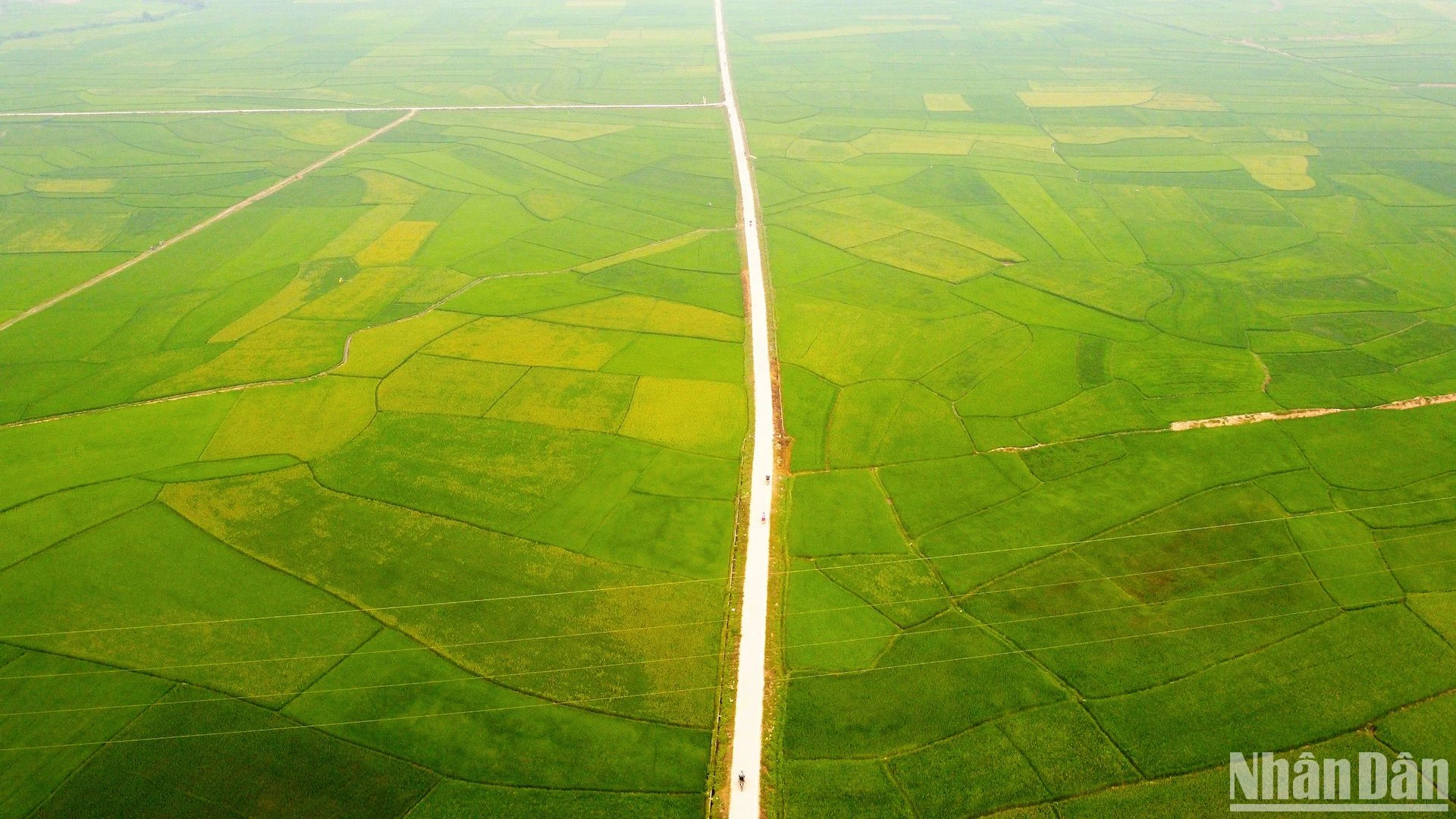 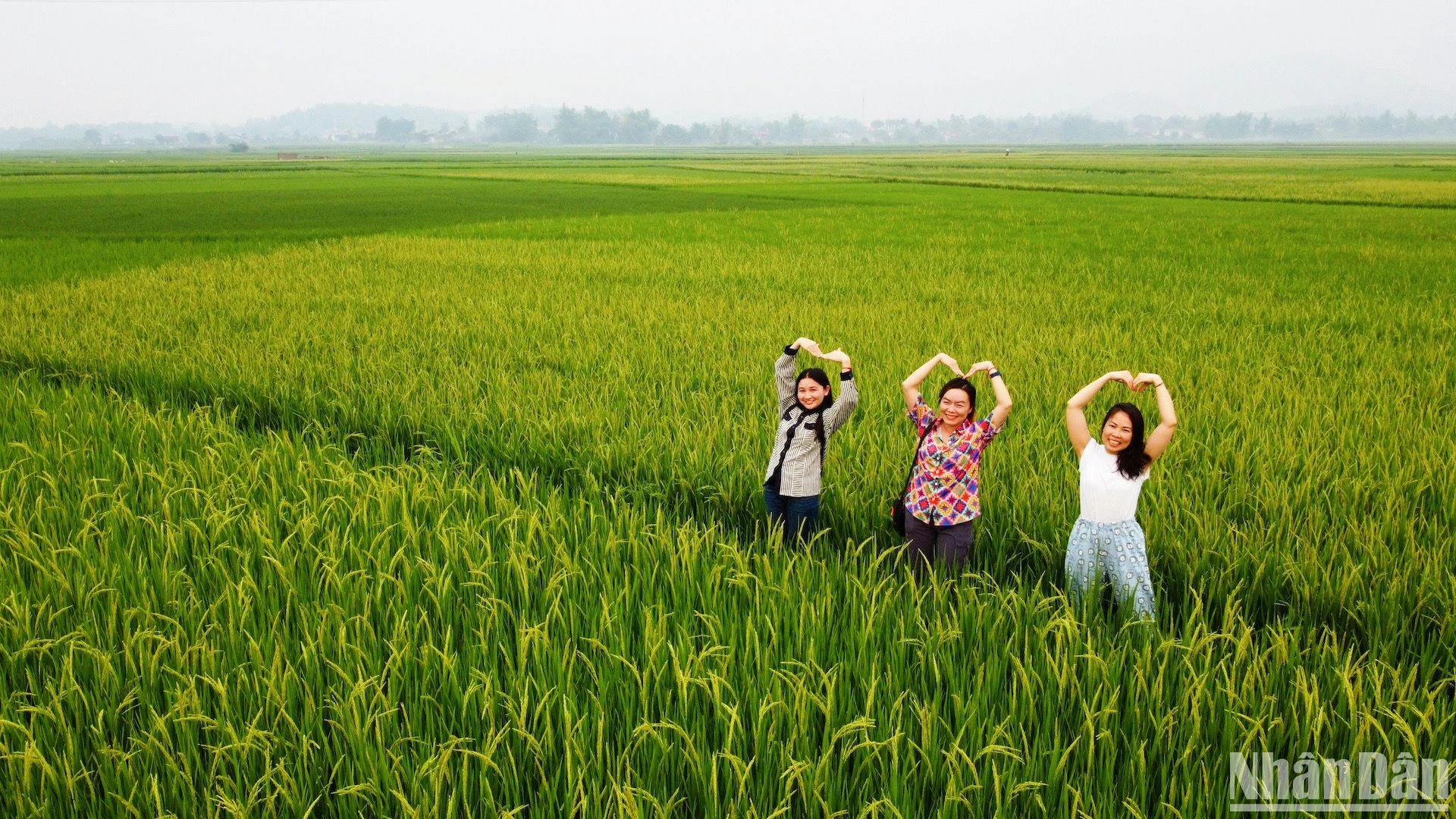 |
| If you love the beauty of the golden season, visitors should follow information about the specific harvest season each year (usually in May and September) to come here to stay in community tourism villages, experience cycling on roads through the immense and fragrant rice fields. |
Ban Phu Citadel
Ban Phu Citadel relic site (also known as Chieng Le Citadel) is located in Noong Het commune, Dien Bien district, about 8km from Dien Bien Phu city. The project is associated with the 18th century peasant uprising led by hero Hoang Cong Chat and liberated the people of the ancient Muong Then (Muong Thanh) ethnic groups from foreign invaders.
 |
A folk song and dance performance by the Thai ethnic art troupe. |
Cultural and community tourism villages of the Thai, Khmu, Lao, Xinh Mun ethnic groups...
Depending on the time of arrival in Dien Bien, visitors can refer to local press and media channels in advance about traditional festivals of ethnic groups taking place at that time (if any) to arrange to attend and experience.
Some prominent festivals in Dien Bien include: Cherry Blossom Festival, Ban Phu Citadel Festival, Han Khuong Festival, Water Festival...
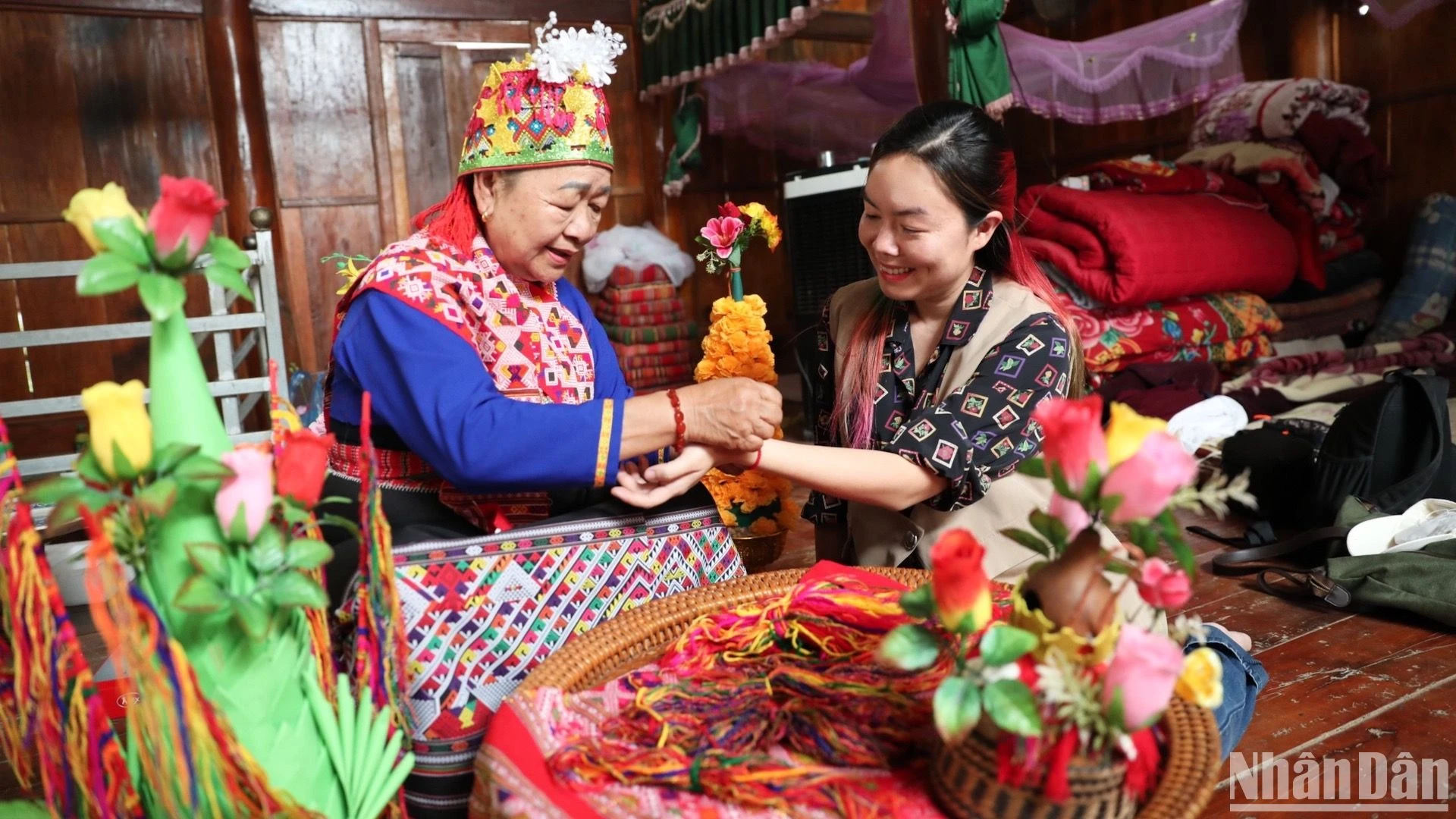 |
Lao artisans in Nua Ngam commune, Dien Bien district perform the cultural ritual of tying a string around tourists' wrists for good luck. |
U Va Hot Spring
The complex of hot mineral baths, entertainment and ethnic cultural experiences is located in U Va village, Noong Luong commune, Dien Bien district, 15km from Dien Bien Phu city. The natural hot mineral sources here have many health benefits, and the tourist area is also invested with full accommodation, dining, sports and resort services.
Taoyuan Mountain Ecological Area
Located in Ang To commune, Muong Ang district, about 45km from Dien Bien Phu city, the tourist area invested and operated by writer Nguyen Duc Loi's family includes natural grass hills, flower gardens, fish ponds, streams, waterfalls...
With about 1,000 ancient peach trees and many unique plants blooming all year round, Dao Vien Son is a favorite picnic spot for many Dien Bien residents.
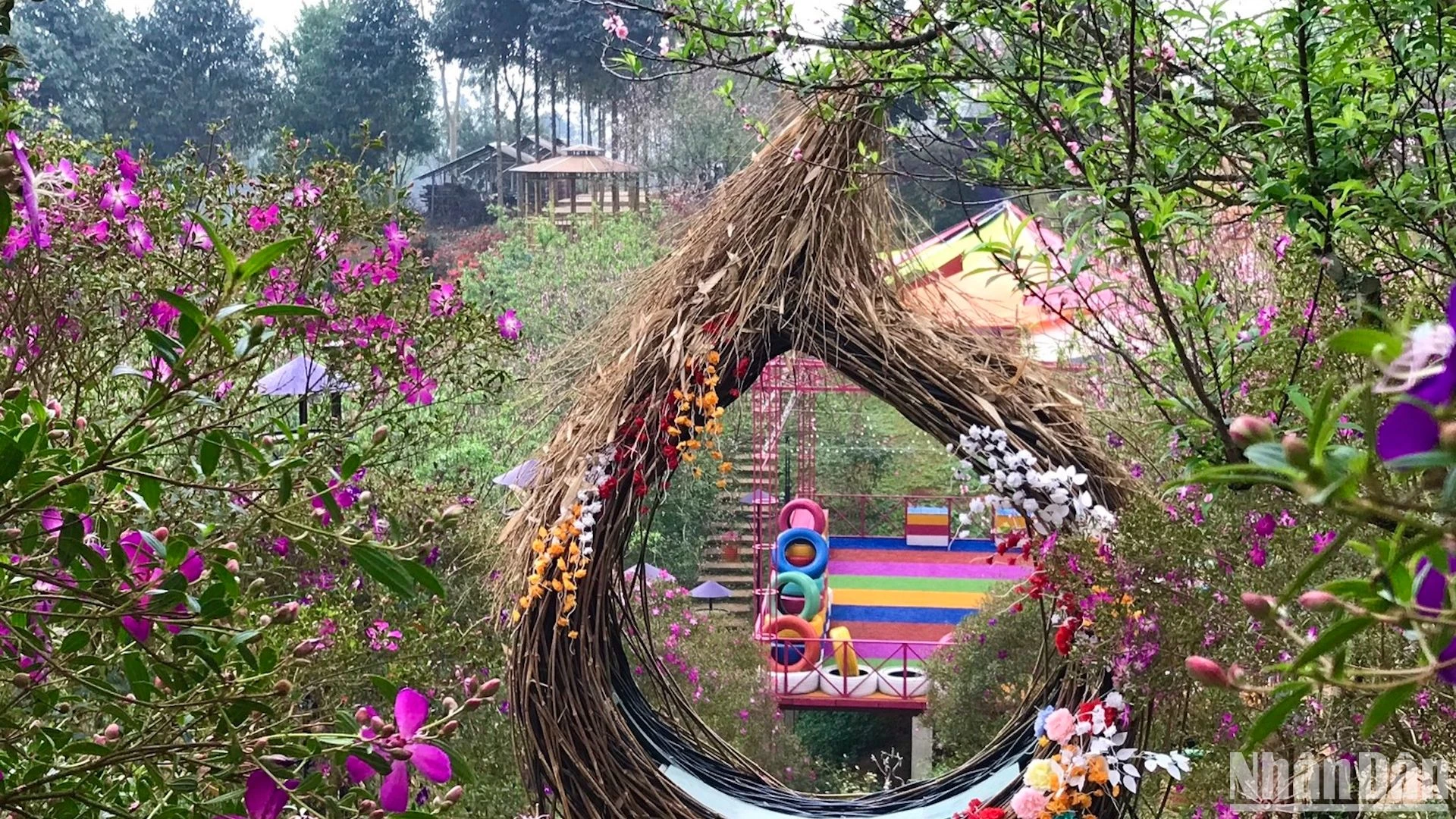 |
Visitors to Dao Vien Son Eco-tourism Area have the opportunity to learn and experience many cultural beauties through architecture, miniature landscapes, cultural and artistic activities bearing the identity of the land and people of the Northwest. |
Day 4: Dien Bien is wild and majestic (if you still have time and are interested in sightseeing, you can choose to explore one of the districts of Dien Bien province)
Muong Lay Town
Located between Dien Bien and Lai Chau provinces and considered the capital of the White Thai people, Muong Lay is a land of beautiful mountains and rivers on the Da River, where not only are there beautiful and prosperous Thai villages but also many favorable factors for sports tourism activities, immersing oneself in nature such as boating, windsurfing, paragliding...
Muong Nhe Nature Reserve and A Pa Chai Border Junction
Muong Nhe District is famous among backpackers as the westernmost point of Vietnam, the border marker of the three countries Vietnam-Laos-China. From Dien Bien Phu city, you need to travel about 250km to reach Sin Thau commune, Muong Nhe district, a highland border area with more than 90% of the population being Ha Nhi ethnic group.
Visitors can experience the life and culture of the Ha Nhi people here, especially during the traditional Khu Su Cha New Year (usually about 1 month before the Lunar New Year of the Kinh people).
Healthy tourists can trek to the top of Khoang La San mountain to check-in at the sacred zero milestone or explore part of Muong Nhe Nature Reserve with its extremely rich and important biodiversity (these activities require permission from local authorities, Border Guard Station 317 A Pa Chai to be allowed and have a guide).
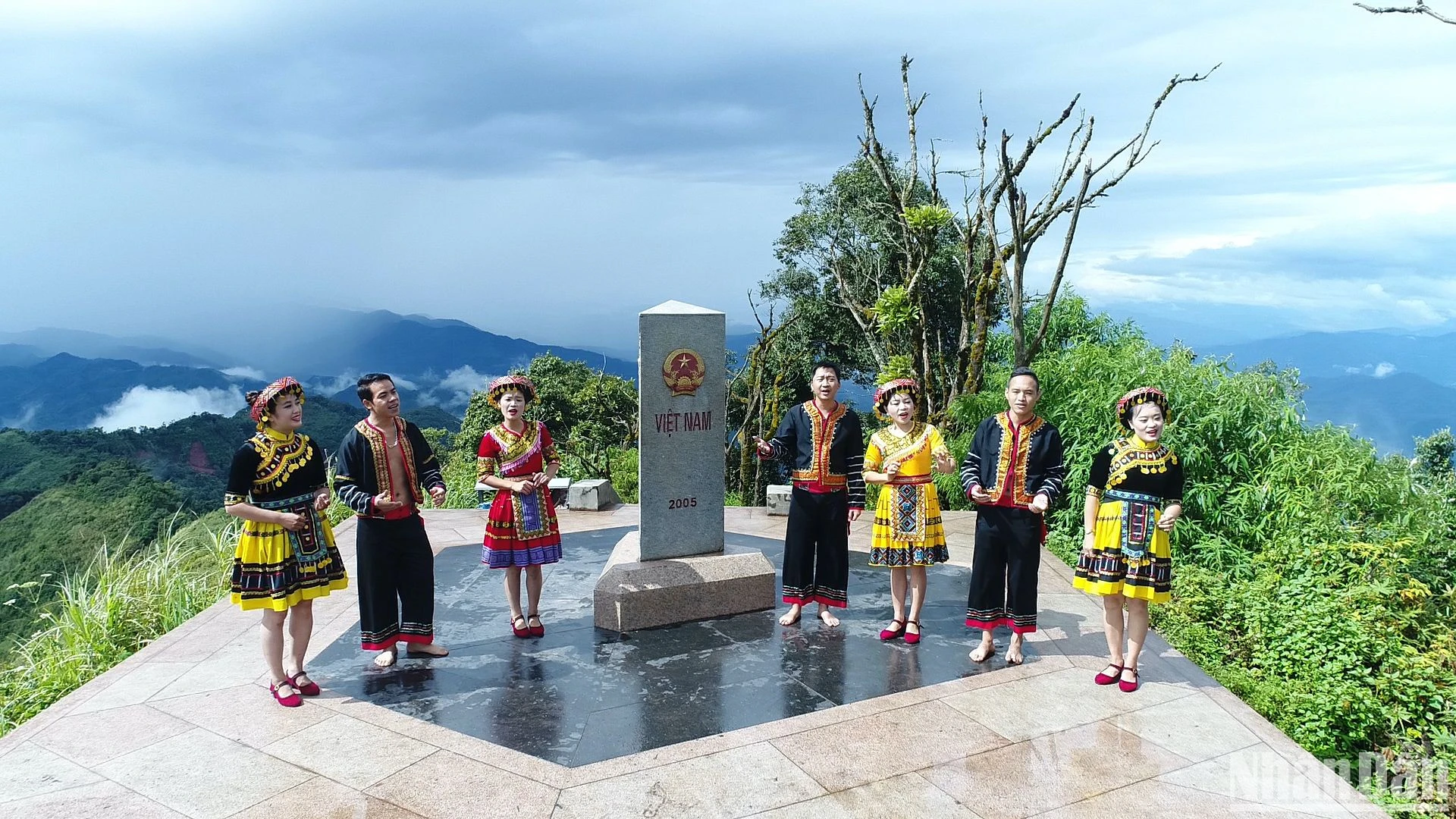 |
Border marker where "when a rooster crows, three countries hear". |
Tua Chua District
Dubbed as "Miniature Northwest" with most of the typical terrains, from the immense cat ear stone plateau in Ta Phin, Sin Chai, then the Da River reservoir - likened to Ha Long on land in Huoi So commune, to the beautiful terraced fields in Sinh Phinh...
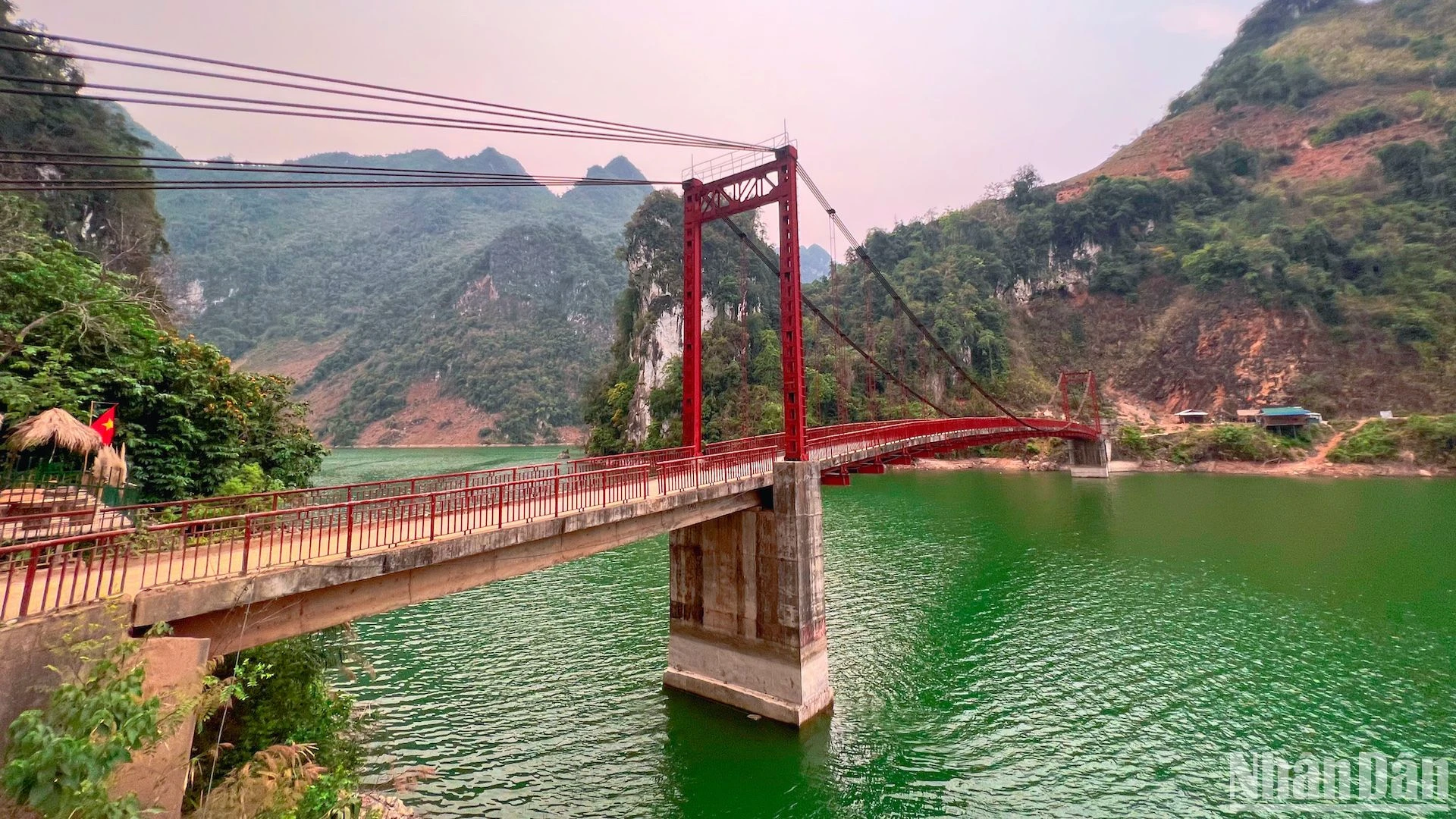 |
Pa Phong suspension bridge crosses the green Da River, a symbolic destination of Tua Chua district. |
Food, souvenirs
Dien Bien cuisine is rich depending on the ethnic community and the area of residence, but the most popular and favorite is Thai ethnic cuisine. Dishes include pa pỉnh tộp (grilled fish), smoked buffalo/pork, purple sticky rice, ban flower salad, bitter bamboo shoots with cham cheo (mixed spices), grilled moss, grilled chicken, etc. Mac khen (wild pepper) is used in many dishes, creating a unique flavor.
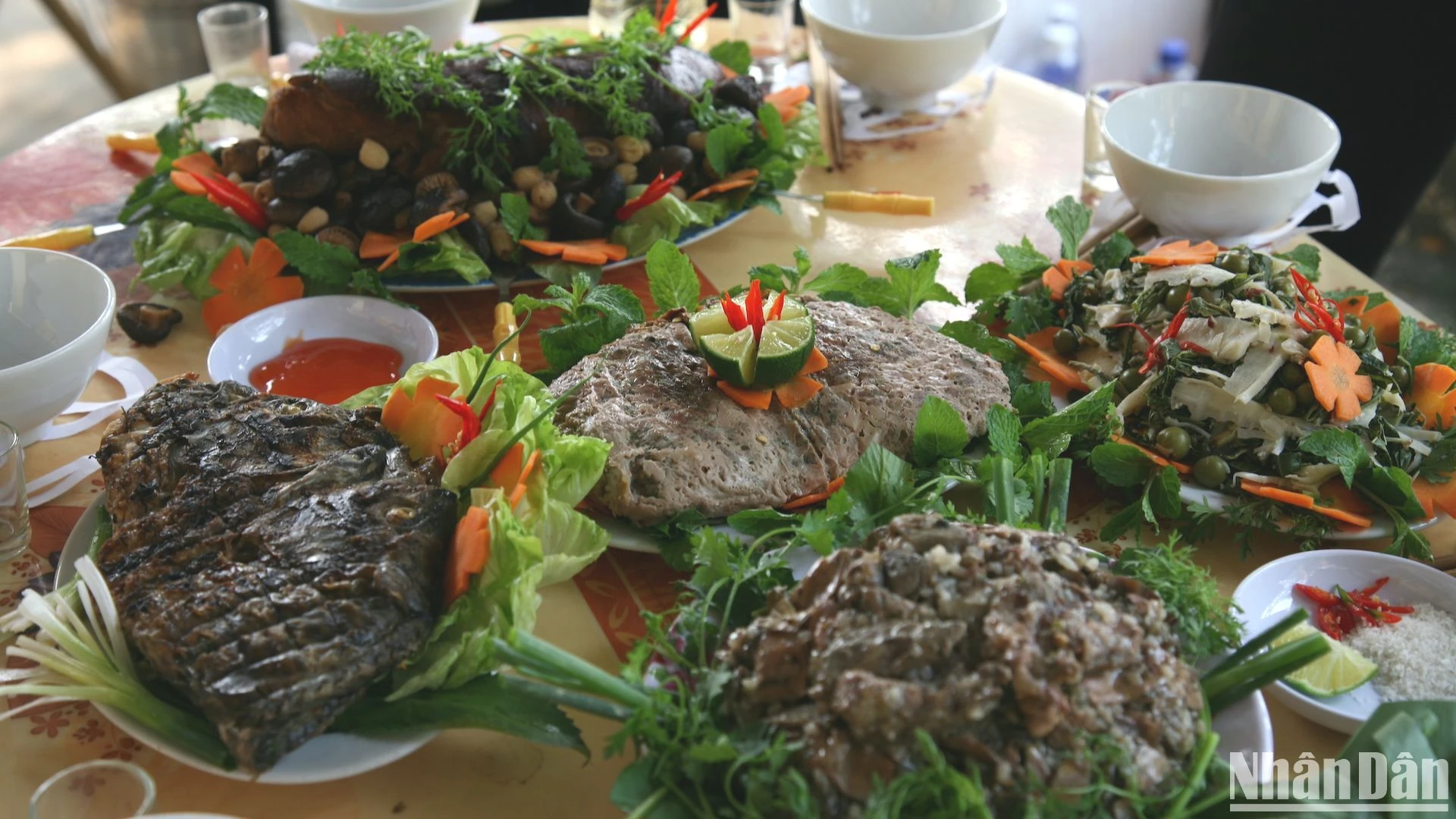 |
A tray of rice with attractive traditional dishes of the Thai people of Dien Bien. |
To buy gifts for relatives, many tourists choose Dien Bien sticky rice/rice, smoked meat, dried cham cheo, Tua Chua snow shan tea, Khau Xen cake (processed like shrimp crackers), dried bamboo shoots...
Muong Thanh Market or large restaurants in Dien Bien Phu City all sell these specialties. In addition, ethnic handicrafts such as brocade, scarves, fashion handbags, wooden decorations, etc. are also of good quality and cheap (although the designs are still simple and not diverse).
Some other notes
Due to the terrain and the influence of the westerly winds, the weather in Dien Bien changes quite quickly, with large temperature differences during the day (mornings and nights can be very cold while afternoons and evenings are hot). You should prepare clothes for all four seasons.
The peak rainy season (around June to September) often has landslides and flash floods, consider your travel schedule this season.
Dien Bien tourism is conveniently connected with a number of neighboring provinces, forming an arc through the Northwest: Lai Chau, Son La, Yen Bai, Hoa Binh...
Source: https://nhandan.vn/trai-nghiem-dien-bien-lich-su-kham-pha-thien-nhien-va-van-hoa-tay-bac-post877672.html


![[Photo] A delegation of 100 journalists from the Vietnam Journalists Association visits the soldiers and people of Truong Sa island district.](https://vphoto.vietnam.vn/thumb/1200x675/vietnam/resource/IMAGE/2025/5/30/0984a986227d4e988177f560d2e1563e)

![[Photo] Journalists moved to tears at the Memorial Service for the soldiers who died in Gac Ma](https://vphoto.vietnam.vn/thumb/1200x675/vietnam/resource/IMAGE/2025/5/30/9454613a55c54c16bf8c0efa51883456)
![[Photo] General Secretary To Lam receives Chief of the Central Office of the Lao People's Revolutionary Party](https://vphoto.vietnam.vn/thumb/1200x675/vietnam/resource/IMAGE/2025/5/30/140435f4b39d4599a3d17975dfb444c5)

![[Photo] National Conference "100 years of Vietnamese Revolutionary Press accompanying the glorious cause of the Party and the nation"](https://vphoto.vietnam.vn/thumb/1200x675/vietnam/resource/IMAGE/2025/5/30/1cf6cd5c8a934ebfa347028dcb08358c)
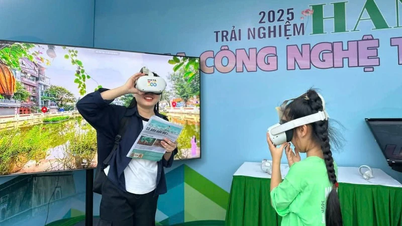
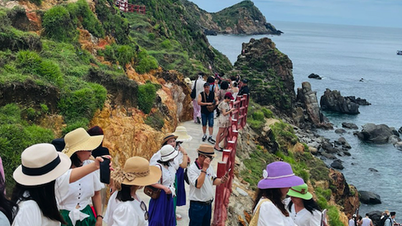

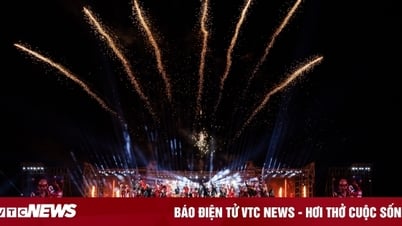

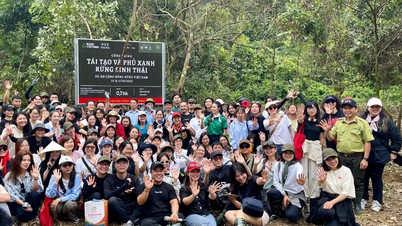
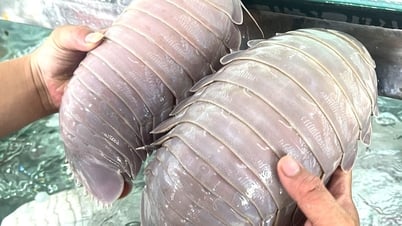

![[VIDEO] Conquering Ghenh Bang Da Nang: Overcoming difficult roads to hunt for breathtaking scenery](https://vphoto.vietnam.vn/thumb/402x226/vietnam/resource/IMAGE/2025/5/30/8b4e00397e55491fa119e538e6b81568)




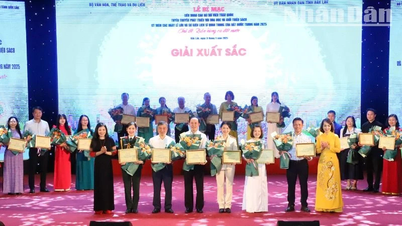
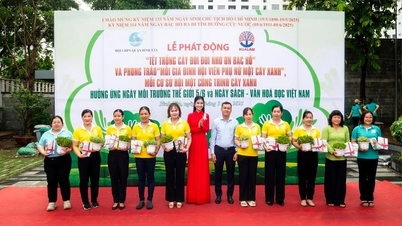

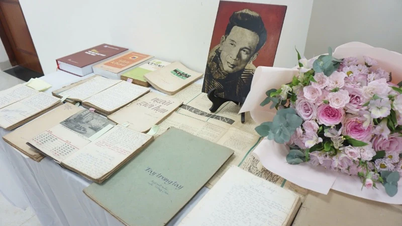
![[Video] Vietnam strives to master the technology to produce 15 types of vaccines by 2030](https://vphoto.vietnam.vn/thumb/402x226/vietnam/resource/IMAGE/2025/5/30/9b660538f5aa46daaff8b19dc9ca8204)












































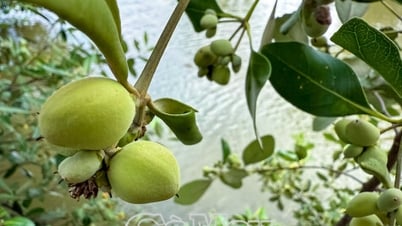
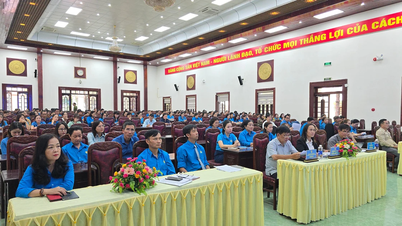

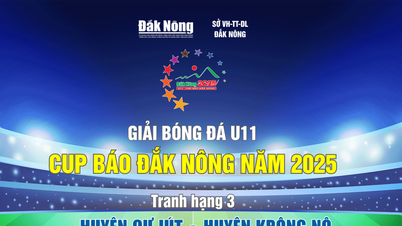

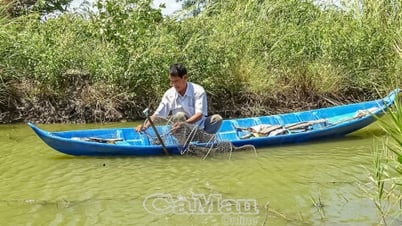
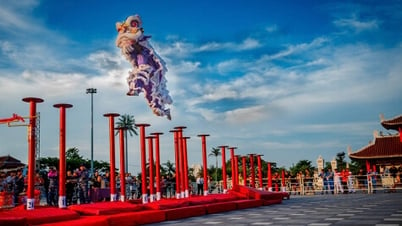













Comment (0)